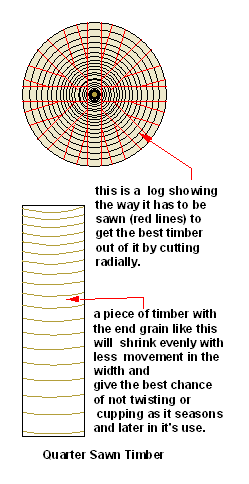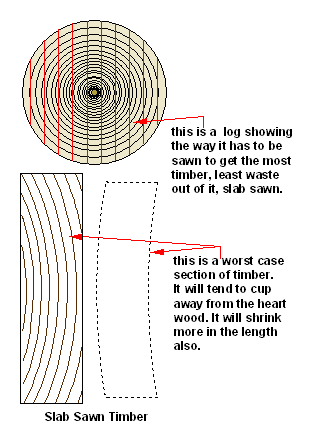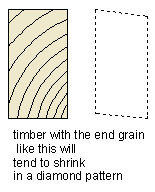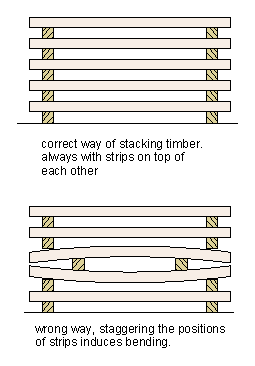 |
||||||||||||
Timber Basics, a Small Amount of Timber Technology
Saw milling.
Once again I am just touching on a very complex subject, there is a lot of information on the web expanding on what I am talking about here. So this is just a short primer, that may help you when you go to a yard to select some timber for your next project. No matter what you are going to do, making an informed selection (if you have any choice of course), will result in a better job. The first requirement of any carpentry or joinery is the timber, it has to be cut out of the log right, then it has to be well dried, or seasoned as we say.
Timber suppliers are in the business of selling timber, quickly an profitably, in unopened packs if possible and they are no doubt quite happy to see the end of old farts like me who believe in selecting each stick by hand and dismissing the ones with defects. One guy said to me once, "we've got to sell it to somebody", my answer was "Yeah, but not to me"! SeasoningWhen a tree is cut down and turned into a log, that green log can contain more weight in water than it does in finished timber. To get to a usable product that water has to be removed, or as we say, the timber has to be seasoned. The difference between well seasoned and not has a huge impact on the quality of the timber. A sign that I have noticed recently with the growth of the Internet, people are swapping information about seasoning timber and a lot more amateur and professional woodworkers are having a shot at drying there own timber. Where I am there are a few guys with solar kilns (made out of old steel shipping containers) who are drying their own timber.
Stacking Timber CorrectlySo assuming that you have had your timber delivered to site, I always at a minimum stack it on skids, that is lumps of timber, steel etc, anything to keep it off the ground. To stop it from soaking up moisture or just bending because it isn't sitting straight.
Here is a link to Kate Taylor's site. A artist and craftswoman who makes wonderfully detailed boxes. Not found it yet? Try this FAST SITE SEARCH or the whole web |
Hire Equipment  Furniture Fittings - Architectural Hardware - Electronic Locking Systems - Technical Hardware BuilderBill sponsorship |
|||||||||||
|
|
||||||||||||
|
Please Note! The information on this site is offered as a guide only! When we are talking about areas where building regulations or safety regulations could exist,the information here could be wrong for your area. It could be out of date! Regulations breed faster than rabbits! You must check your own local conditions. Copyright © Bill Bradley 2007-2012. All rights reserved. |
||||||||||||



